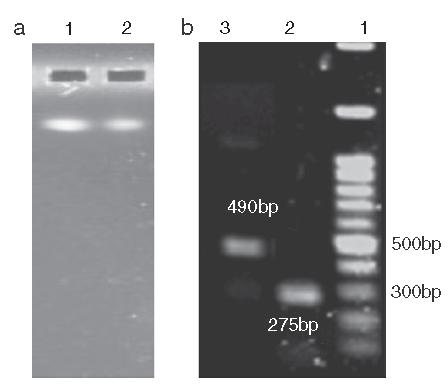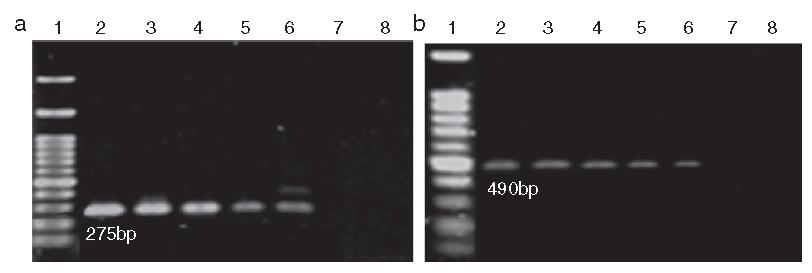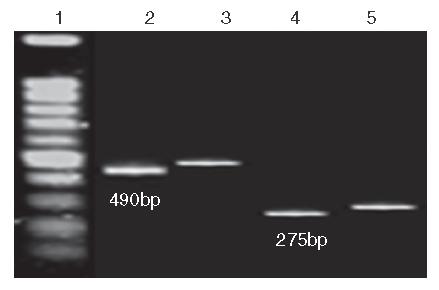Shiga toxin producing bacteria are potential causes of serious human disease such as hemorrhagic colitis, severe inflammations of ileocolonic regions of gastrointestinal tract, thrombocytopenia, septicemia, malignant disorders in urinary ducts, hemolytic uremic syndrome (HUS) Shiga toxin 1 (stx1), shiga toxin 2 (stx2), or a combination of both are responsible for most clinical symptoms of these diseases. A lot of methods have been developed so far to detect shiga toxins such as cell culture, ELISA, and RFPLA, but due to high costs and labor time in addition to low sensitivity, they have not received much attention. In this study, PCR-ELISA method was used to detect genes encoding shiga toxins 1 and 2 (stx1 and stx2). To detect stx1 and stx2 genes, two primer pairs were designed for Multiplex-PCR then PCR-ELISA. PCR products (490 and 275, respectively) were subsequently verified by sequencing. Sensitivity and specificity of PCR-ELISA method were determined by using genome serial dilution and Enterobacteria strains. PCR-ELISA method used in this study proved to be a rapid and precise approach to detect different types of shiga toxins and can be used to detect bacterial genes encoding shiga toxins.
Shigella dysenteriae; E.coli O157:H7; PCR-ELISA Diagnostic methods






